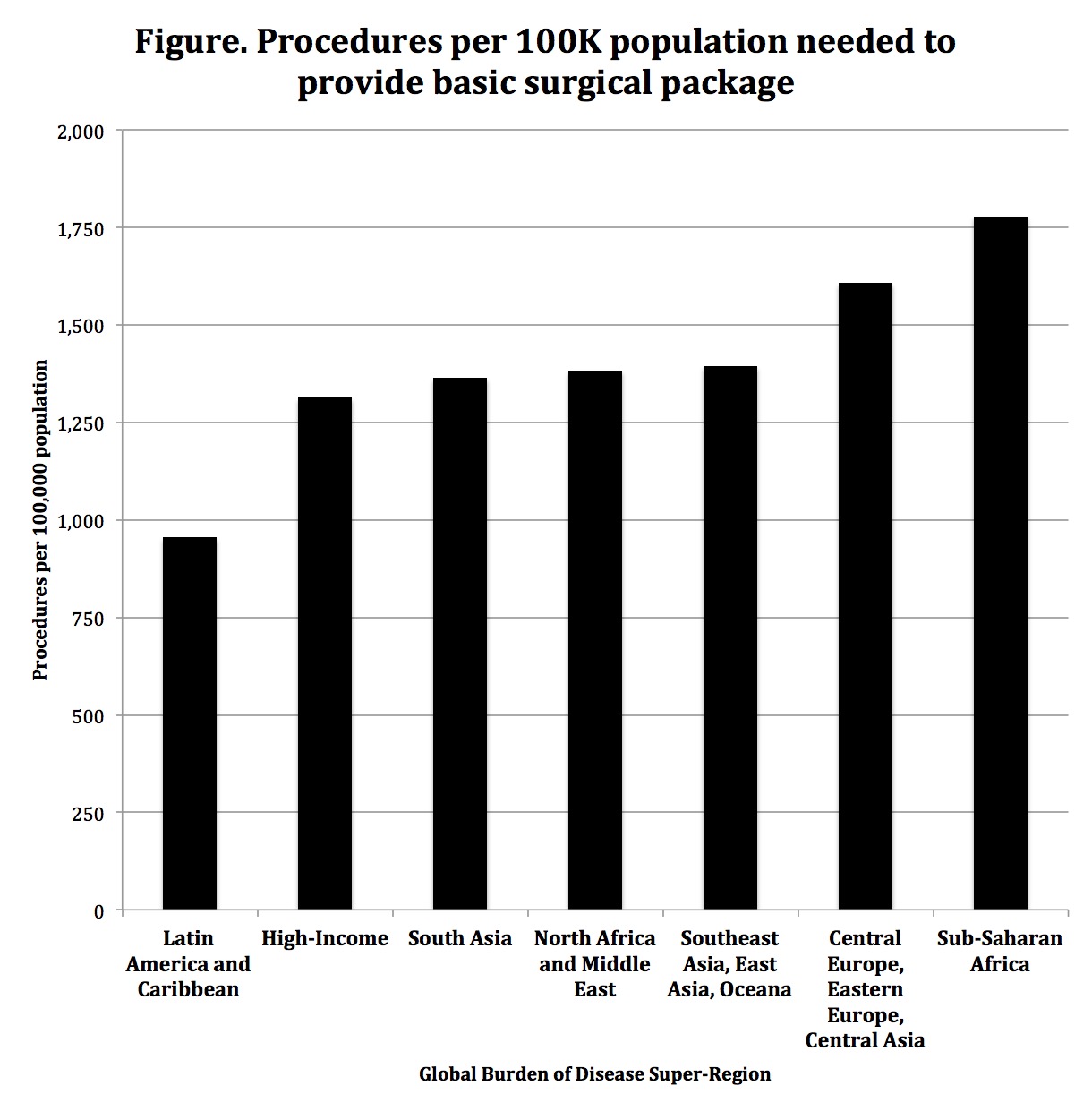J. W. Scott1,2, J. A. Rose1, M. Esquivel3, T. G. Weiser3, S. W. Bickler4 1Brigham And Women’s Hospital,Center For Surgery And Public Health, Department Of Surgery,Boston, MA, USA 2Program For Global Surgery And Social Change,Harvard Medical School,Boston, MA, USA 3Stanford University,Department Of Surgery,Palo Alto, CA, USA 4University Of California – San Diego, School Of Medicine,Department Of Surgery,San Diego, CA, USA
Introduction:
The 2015 Disease Control and Priorities 3 (DCP3) outlined a basic surgical package (BSP) capable of averting 3.2% of all deaths in LMICs by providing a focused package of basic yet essential procedures to care for conditions with significant health burden and available, feasible, and cost-effective treatments. Specifically, the BSP focuses on treatment of four common digestive diseases (appendicitis, paralytic ileus and intestinal obstruction, inguinal and femoral hernia, and gallbladder and bile duct disease), four maternal-neonatal conditions (maternal hemorrhage, obstructed labor, abortion, and neonatal encephalopathy), and injuries that could be treated with basic interventions. The aim of this study is to determine the volume of procedures needed to provide the BSP on a global scale.
Methods:
Prevalence of diseases and conditions from the Global Burden of Disease Study (GBD) 2010 was organized into 119 categories corresponding to the WHO’s Global Health Estimate and then apportioned to the 21 GBD epidemiological regions and seven GBD super-regions. Using data from the Lancet Commission on Global Surgery (LCoGS) on the incident need for surgery based on each category, we calculated the number of procedures needed to provide the BSP. Using the LCoGS estimates of minimum surgical needs for each GBD region, we also calculated the proportion of procedures accounted for by the BSP, as well as rates of procedures per 100,000 population necessary to provide the BSP for each super-region.
Results:
We estimate that the BSP represents 96.6 million needed procedures annually. The worldwide per population rate of procedures needed is 1402/100K population and ranges from 955/100K in the Latin America and Caribbean super-region to 1,779/100K in Sub-Saharan Africa (Figure). Based on prior estimates of surgical need, the BSP accounts for 30.0% of all needed procedures worldwide, with a range of 25.9% to 33.5% by GBD super-region.
Conclusion:
Providing the DCP3 recommended Basic Surgical Package to cover a focused set of diseases accounts for almost one-third of the minimum estimated need for surgery worldwide. In order to provide these basic but essential services, surgical infrastructure must be sufficient to provide at least 1,400 procedures/100K population. Health systems could use these data for targeting national-scale up of essential surgical services.
